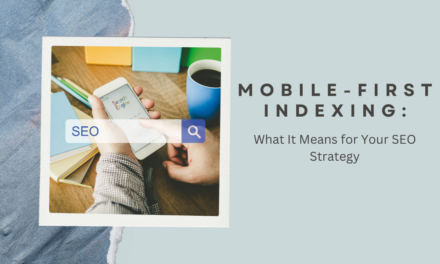As local enterprises increasingly adopt online platforms to connect with customers, distinguishing themselves in local search results has become more difficult. Predictive SEO provides a remedy by allowing companies to foresee search patterns, thus seizing local trends. This method can greatly improve a company’s visibility and interaction within its community.
Predictive SEO for Local Businesses
Predictive SEO uses data to forecast future search behaviors, helping businesses stay ahead of search trends. For local businesses, this approach can be particularly valuable as it enables them to connect with the unique needs and interests of their neighborhood. By capturing neighborhood-specific trends, businesses can tailor their online content and strategies to meet local demand more effectively.
In local SEO, predictive SEO involves recognizing the kinds of searches expected to gain popularity in a particular region. This understanding allows companies to generate content and enhance their online visibility in ways that align with emerging trends. For instance, a local bakery may find that vegan choices are being sought after more frequently in their vicinity. They might then develop vegan products and advertise them online, targeting the appropriate audience before rivals even recognize the trend. Predictive SEO enables companies to anticipate local demand in advance.
By focusing on predictive analysis for local SEO, small businesses can gain a strategic advantage in their markets, boosting their search rankings and reaching more customers in their community. For local businesses, understanding and responding to these neighborhood-specific search trends is essential in maintaining a competitive edge.
Understanding Neighborhood-Specific Search Trends
Neighborhood-specific search trends are insights into what a particular community or area is searching for online. These trends reflect the unique interests, concerns, and seasonal behaviors of people in that location. For example, in one neighborhood, there might be a high demand for outdoor dining, while another area could be more interested in fitness and wellness services. By understanding these trends, businesses can adjust their offerings and marketing strategies to better align with local needs.
In practical scenarios, trends specific to neighborhoods enable businesses to emphasize hyperlocal SEO. Hyperlocal SEO involves fine-tuning online content to reach customers in highly specific locations, even down to an individual neighborhood or a specific block. This method is particularly beneficial for small enterprises that depend significantly on local clientele, including cafes, fitness centers, and specialty shops. By customizing their online presence to meet these hyperlocal needs, companies can enhance their visibility in their local vicinity, boosting both foot traffic and online interaction.
Neighborhood trends can also be influenced by local events, holidays, or seasonal activities. For example, a ski resort town might see an increase in searches for snow gear during winter, while beach towns may see spikes in searches for swimwear in summer. Businesses that pay attention to these changes in search patterns can create timely promotions and content, boosting their visibility and relevance in search results.

How Predictive SEO Works in Local Contexts
Predictive SEO relies on predictive analysis to understand how search behaviors may change over time. Predictive analysis uses historical data to forecast future trends, helping businesses make proactive decisions about their content and marketing. For local businesses, this means looking at past search data, current events, and local preferences to determine what people are likely to search for in the near future.
In a local context, predictive analysis can be especially insightful because local businesses often have access to specific data points that larger businesses may overlook. For instance, a small business in a coastal town might notice that searches for “kayak rentals” increase around springtime each year. By recognizing this trend early on, the business can create targeted content, promotional deals, or service packages that align with this predictable seasonal interest.
Predictive SEO enables companies to spot upcoming trends before they gain widespread popularity. This proactive strategy enables companies to establish themselves as community leaders in their industry. If a fitness studio observes an increase in local inquiries for “yoga for newbies,” it may think about introducing beginner classes, organizing special events, or providing discounts. By predicting these trends, local businesses can attract potential customers when they are most engaged, enhancing their visibility and reputation within the community.
Gathering Data for Neighborhood-Specific SEO Strategies
To implement effective predictive SEO, gathering the right data is crucial. Local businesses can use various tools to collect data on neighborhood-specific search trends, which serve as the foundation for their SEO strategies. Here are a few methods for gathering actionable data:
- Google Trends: Google Trends is a valuable tool for observing how certain search terms perform over time and in specific locations. Local businesses can use Google Trends to see what’s trending in their area, identify seasonal shifts, and plan content that aligns with these trends.
- Social Media Insights: Platforms such as Facebook, Instagram, and Twitter offer information on user behaviors and popular subjects. For instance, Instagram location tags and hashtags can uncover local interests and happenings, whereas Facebook groups can provide insight into community requirements and choices.
- Local Online Forums and Groups: Neighborhood forums, such as those on Reddit or Nextdoor, can provide insights into what local customers are discussing. By monitoring these discussions, businesses can discover emerging needs or popular topics that might not yet show up in search data but could become relevant soon.
- Competitor Analysis: Observing what local competitors are doing can also provide insight into emerging trends. For example, if a nearby café begins offering gluten-free options, it could be an indication that there is demand for similar offerings in the area.
Gathering data is the first step in understanding neighborhood trends. With accurate, localized data, businesses can develop content that speaks directly to their audience, improving local SEO and small business visibility.
Applying Predictive SEO to Create Targeted Content
Once data has been collected, the next step is to use it to create targeted content that aligns with neighborhood-specific trends. This content should be tailored to address the specific needs and interests of the local community. For example, if data shows a surge in searches for “pet-friendly restaurants,” a local restaurant might create a blog post or social media content showcasing its pet-friendly policy, along with a list of menu items suitable for pet owners on a day out.
Local companies can likewise utilize predictive analytics to create seasonal content. A gym could employ this strategy to promote “getting fit for summer” in early spring, utilizing past years’ search statistics that indicate an increase in fitness-related queries during that period. By synchronizing content with seasonal trends, companies enhance their likelihood of showing up in pertinent search results during peak interest times.
Predictive SEO can also help businesses adapt to changing consumer needs. If a bakery sees that more people are searching for gluten-free options in its area, it can update its menu and post about these options online. Creating content that reflects the community’s current preferences and predicting shifts in demand allows businesses to stay visible and relevant in local search results.

Optimizing for Mobile and Voice Search to Capture Local Traffic
In the current digital landscape, mobile and voice searches are essential for local SEO, particularly as an increasing number of consumers seek information while on the move. Numerous searches are performed using terms such as “near me” or particular inquiries for local services. Making sure a business is optimized for mobile and voice search can significantly enhance its likelihood of showing up in local search results.
For mobile optimization, businesses should ensure their website is responsive, loads quickly, and provides a smooth user experience on smartphones. A mobile-friendly site is also crucial for appearing in local search results, as Google’s algorithm prioritizes mobile-friendly sites in its rankings. Additionally, including neighborhood-specific keywords, such as “pet-friendly restaurants in [Neighborhood]” or “gym near [Local Park],” can improve visibility for local searches.
Voice search optimization involves adapting content to reflect natural language patterns. Voice search queries often resemble questions or complete sentences, like “Where can I find a pet-friendly café in [Neighborhood]?” or “What time does [Business] close today?” Businesses can improve their voice search rankings by incorporating question-based keywords and using structured data markup to provide clear answers that search engines can pull into voice responses.
By optimizing for mobile and voice, businesses make it easier for local customers to find them when searching for neighborhood-specific services, further boosting small business visibility.
Measuring Success: Key Metrics for Local Predictive SEO
Measuring the success of predictive SEO efforts is crucial for refining strategies over time. Several key metrics help businesses understand the impact of their efforts and identify areas for improvement. These include:
- Local Keyword Rankings: Tracking local keyword rankings provides insight into how well a business is performing in its target neighborhood. A rise in rankings for neighborhood-specific keywords indicates that the SEO strategy is effectively reaching the intended audience.
- Organic Traffic Growth: Evaluating the increase in organic traffic from particular areas can aid in determining the success of predictive SEO strategies. If a company observes a rise in traffic from its intended area, it indicates that the strategy is generating local engagement.
- Engagement Metrics: Metrics such as page views, time on site, and click-through rates can reveal how well local customers engage with the content. Higher engagement suggests that the content is relevant to the audience’s needs and interests.
- Conversion Rates: For businesses offering local services or products, tracking conversion rates provides insight into how many site visitors are becoming actual customers. High conversion rates from local traffic indicate that predictive SEO is successfully attracting the right audience.
Regularly monitoring these metrics allows businesses to adjust their strategies, ensuring they continue to capture neighborhood-specific trends effectively.
Conclusion
Predictive SEO offers a robust framework for local enterprises looking to harness neighborhood-specific search patterns and enhance their visibility. By utilizing predictive analysis, local businesses can foresee changes in customer preferences and develop content that aligns with local needs, enhancing their local SEO. By concentrating on local trends, small businesses can foster deeper ties with their community and obtain a competitive advantage. Adopting these approaches equips businesses for sustained success, fostering local involvement and enhancing customer connections in a progressively digital environment.












